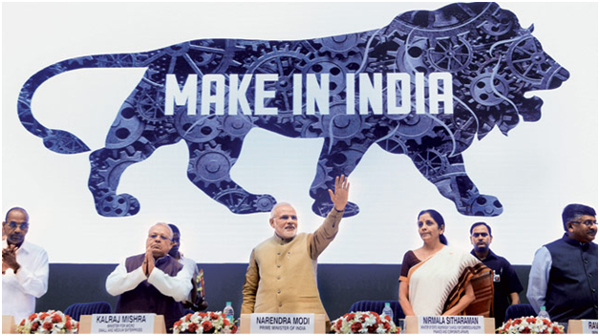A comprehensive defeat of the Congress has established that its ‘Rafale scam’ charge did not stick and was a non-issue as far as the electorate was concerned. However, the vigour with which it was raised over the past year had a strong impact on the bureaucracy, which adopted a cautious note when it came to taking calls on modernisation and promotion of the Make in India policy.
The decisive mandate the BJP has got again now needs to free up the private industry phobia that the Rafale scam allegations triggered. The Make in India in defence initiative, which the BJP has mentioned prominently in its manifesto for 2019, needs to be anchored firmly around the private sector.
A good foundation is in place—initially driven by former defence minister Manohar Parrikar—with the strategic partnership model as well as well-defined policies on treating Indian companies first for all defence and strategic requirements. What has been missing are the work orders that will truly kick-start the sector and drive jobs.
The next defence minister of India needs to smoothen out the wrinkles and get the engine going on the following –
SP Policy
The SP policy—initially planned to create India’s Boeings and Lockheed Martins—has morphed from a game changer for the private sector into a free for all in which government-owned public sector units now seem to have a clear advantage.
Four key projects that the SP policy has identified are mega plans to construct new conventional submarines, a new fleet of naval utility helicopters, armoured vehicles and a new line of modern combat jets.
The two programmes that are progressing the fastest—and hopefully will lift off within the next three months—promise to give the public sector an unfair advantage. For submarines, the Mumbai-based Mazgaon Docks Ltd (MDL) has a clear edge over its only competitor Larsen and ToubroNSE 4.61 % due to the infrastructureNSE 5.99 % investment already in place.
Similarly, in the naval helicopters contest, HAL has put in two bids that could be tough to beat on pricing, given that the public sector unit has land, infrastructure and personnel already on board for its ongoing joint venture with Russia’s Kamov.
A reason, perhaps, why public sector units have been able to muscle into these mega projects is the shadow of the Rafale allegations where the central point of the Congress attack was that HAL was ignored in favour of a private company.
It will be a tough call but taking the SP model back to its original purpose—to kick-start the private sector into a global league—would go a long way in the success of Make in India as far as the defence sector goes.
Export Focus
The renewed mandate of the Modi government is expected to resound in India’s foreign policy too, especially given aggressive measures taken by China in recent years in the neighbourhood. For the past few months, a renewed effort has been made to jump up defence exports from India to the region.
These are being pushed primarily by the government with a clear defence exports policy and cooperation of Indian missions abroad. However, India needs to unlock the power of its financial might here and activate the $1.3 billion odd worth of line of credits that it has promised to friendly foreign nations.
Here too the focus seems to be on using the public sector—each unit has been given a mandate to pitch its products abroad and standard operating procedures for expeditious utilisation of line of credits have not been defined for the private sector yet. Given the number of small and medium defence companies that are already exporting to the world market, this is strange and needs to be extended to the private sector at the earliest.
Key Acquisitions
One strong promise the BJP made before elections was that it will continue on its zero tolerance policy against terror and will speed up purchases of outstanding equipment and weapons needed by the forces. The Balakot operations and the retaliatory strike by Pakistan the next day bring out focus on a few urgent needs that cannot wait.
The first being the Rafale fighter jets—the air force is of the firm belief that the French origin fighters will be able to perform wonders and would leave no room for terrorists to hide even within Pakistan given their superior weapon and sensors range. The 36 jets on order are not enough to ensure this though and the air force would need an equal number more at the earliest—even if this means importing them fully from France.
Other systems needed if India has to keep the air strikes option open to act against terror are close in weapon systems—short range anti-aircraft guns and shoulder fired anti-air missiles for the army and air force. The S 400 air defence system acquisition from Russia too needs to be expedited to keep the skies safe. For the navy, an extension of the submarine fleet is essential if escalatory steps like a complete blockade of major ports in Pakistan have to be kept as an option against acts of terror.
Source:ET
Image Courtesy: Medium
You may also like
-
IAF Aircraft Set Course For Exercise Eastern Bridge VII At Oman
-
IAF Set To Host The Indian Defence Aviation Exposition-II At Jodhpur
-
Defence Secretary to co-chair 5th India-Philippines Joint Defence Cooperation Committee meeting in Manila
-
Simultaneous Launch Of ‘malpe And Mulki’, Fourth And Fifth Ships Of Asw Swc (Csl) Project
-
Aatmanirbharta in Defence: MoD signs Contract with HAL for 240 AL-31FP Aero Engines for Su-30MKI Aircraft
